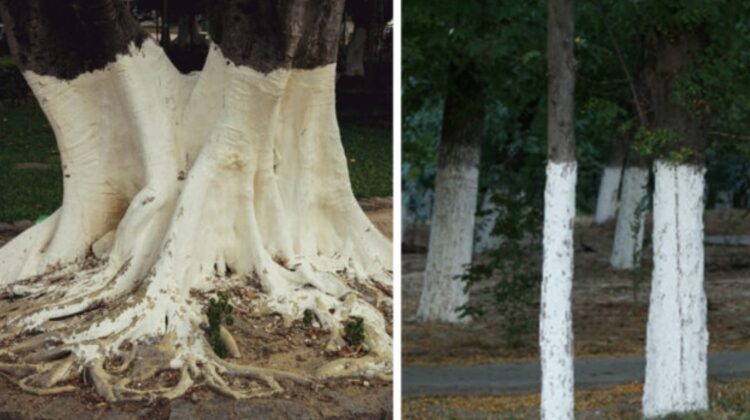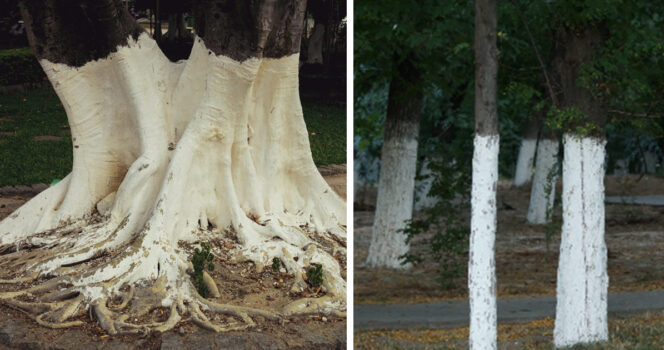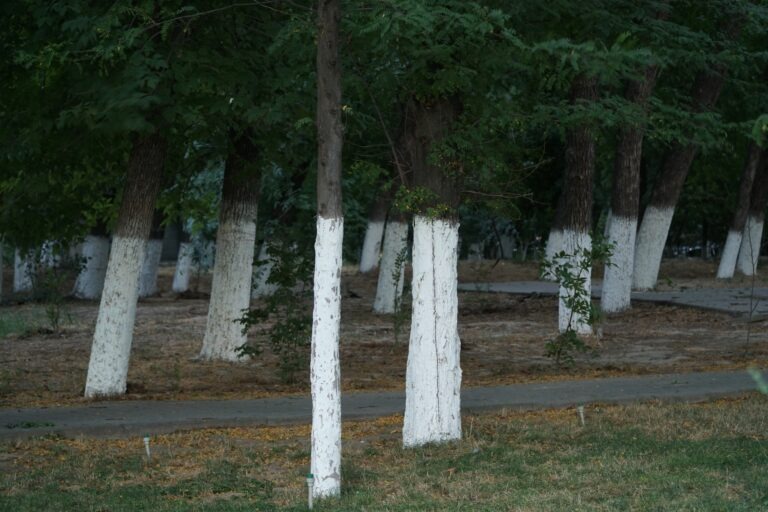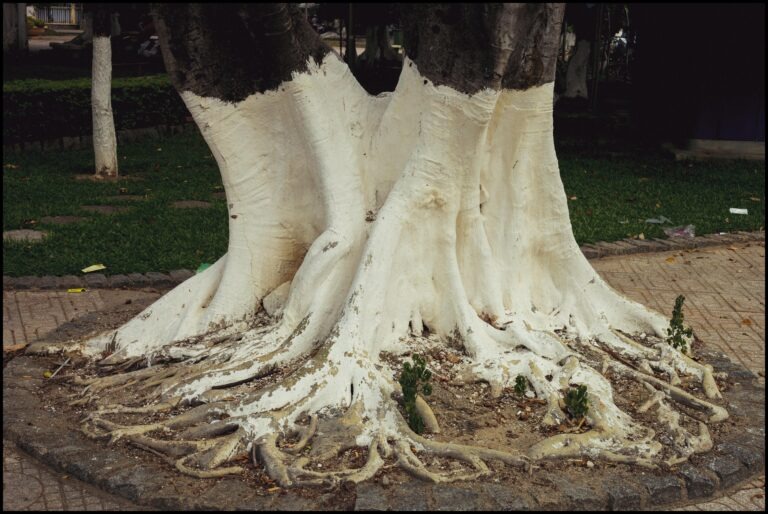
The internet has become an essential tool in our lives, providing instant access to knowledge that once required hours of research in libraries or expert consultations. With just a few clicks, we can uncover explanations for some of the world’s most intriguing phenomena.
One such mystery recently caught our attention: Why are some tree trunks painted white? If you’ve ever noticed this peculiar sight and wondered about its purpose, you’re not alone. As it turns out, this practice serves an important function—protecting trees from sunburn and temperature fluctuations.
The Science Behind Painting Trees White
While it may sound unusual, trees—like humans—can suffer from sunburn. During winter and early spring, the sun can heat up a tree’s bark during the day, causing it to expand. At night, when temperatures drop suddenly, the bark shrinks rapidly, sometimes leading to cracks and splits. This condition, known as sunscald, can permanently damage the tree and leave it vulnerable to disease and pests.

By painting the lower portion of a tree trunk white, the sunlight is reflected rather than absorbed, preventing excessive heating during the day and reducing temperature fluctuations at night. This method has been widely used by gardeners, orchard owners, and arborists to protect trees from extreme weather conditions.
Additional Benefits of White Tree Paint
Beyond preventing sunscald, whitewashing tree trunks offers other advantages:
- Pest Prevention: Certain insects, like borers and ants, are less likely to infest trees with painted bark.
- Fungal Protection: The reflective surface helps keep moisture levels stable, reducing the risk of fungal infections.
- Rodent Deterrence: Some animals, like rabbits and mice, tend to avoid gnawing on painted tree trunks.

What Type of Paint Is Used?
It’s important to note that not just any paint will do. Specialized tree paint or a diluted mix of interior latex paint and water (typically 50:50) is used to ensure breathability. Oil-based paints are never used, as they can suffocate the tree’s bark.
A Common Sight in Orchards and Gardens
If you’ve ever visited an orchard, you may have noticed rows of fruit trees with white trunks. Farmers often apply this technique to protect apple, peach, citrus, and other fruit-bearing trees, ensuring their health and productivity.

Final Thoughts: A Simple Yet Effective Solution
At first glance, white-painted tree trunks may seem like an artistic choice or even vandalism. However, this simple practice has a scientific purpose—safeguarding trees from environmental stress.
Had you heard of this before? Let us know in the comments!

Leave a Reply